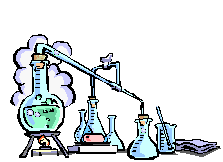Process that based on the different boiling point of liquids of different composition allows to separate the different components of a mixture, for example, the boiling point at atmospheric pressure of ethyl alcohol is 78.4°C while of the water it is 100°C.
The tool used for this process is called still, types of which vary depending on the type of distillate to obtain. It is essentially correct, however, the distinction into two types: the pot still and conitnuous still.
The traditional pot still or discontinuous still consists of 4 parts:
the boiler, usually copper, into which enter the raw materials to be distilled. Below it there is the heat source;
dephelgmater or capital, located near the top of the boiler, is designed to facilitate the passage of certain alcoholic vapors instead of others;
swan neck, curved structure that serves to prevent the alcohol vapors travel in the opposite direction;
the cooling coil, immersed in water or a coolant liquid, which recondenses alcoholic vapors bringing them back into liquid state.
The pot still allows only one distillation for every load of raw material because every time it is used it must be emptied, cooled and cleaned before a new cycle can start.
To get a good quality alcohol multiple distillations are used: usually at least two of them are neccesary to have a decent product.
During these operations, the master distiller’s task is to discard the “head” (part of the liquid obtained during the initial phase rich in impurities, containing highly volatile substances with a high alcohol content) and the “tail” (the liquid obtained during the final phase containing heavy substances, of low strength and considerable amounts of water vapor) to keep only the “heart” or noble alcohol, the liquid obtained during the middle phase, which has an average grade and important non-alcoholic elements to give tastes and scents, in a few words- ethyl alcohol.
The continuous still, called also patent still or Coffey still, invented in 1831 by Aeneas Coffey, is characterized by the ability to perform in an automated manner that we described previously.
The plant has two twin pillars: one for the distillation, called the analyzer, and one for the correction, called the rectifier. An ingenious system of pipes and plates with bubbler valve ensures that the raw material, loaded from the analyzer, meets warm currents coming from below, passing a gaseous state. The part that does not trasform during this phase, i.e. the tail, will be immediately discarded from the bottom.
In the rectifier plates with different heights and temperatures during condensation separate the heads from the heart.
The modern stills include a greater number of columns, some responsible for the distillation and for the rectification in continuity, others for the extraction of alcohol products through the recycling of the head and tail.

